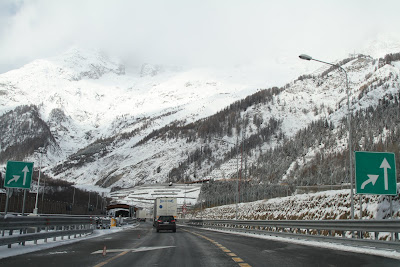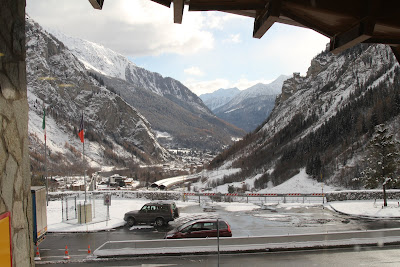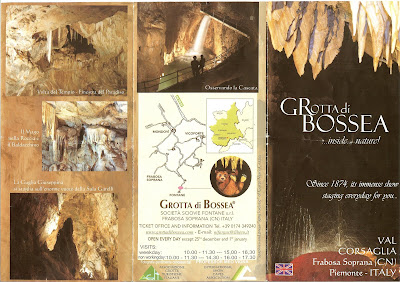Last Chance Pasta
After our two nights in Pontboset, it was time to head out of Italy to Switzerland, specifically, Morges (outside of Geneva). Morges is the European operations of Wild Dingo and it was time to pay tug. When we looked at routes from Pontboset to Morges, the quickest route is through the Great St. Bernard Tunnel, but people advised that us to not go through that route for snow reasons and to take the Mont Blanc Tunnel. The St. Bernard Tunnel is about 1500-1600 feet higher in altitude. So we opted for Mont Blanc since we weren’t pressed for time. The difference between the two routes was 15 minutes and about 25 miles so not a hard decision.
Both tunnels are named for nearby geographical features, the St. Bernard Tunnel for the Great St. Bernard Pass (at 8100 feet) and Mont Blanc Tunnel for Mont Blanc (at 15,782 feet). One of my favorite memories was a large postcard I received from my grandparents from the St. Bernard Pass featuring a St Bernard dog in laying a meadow of alpine flowers. I can remember that card like it was yesterday. The pass is named for Saint Bernard of Menthon who founded a hospice for travellers and used dogs for rescue that came to be known as St. Bernard.
Before entering the Mont Blanc Tunnel we stopped and parked and went into the rest area where we were confronted with a large display of pasta. Last stop for pasta before you go to France where pasta just ain’t pasta! We passed up the deal. We didn’t think Wild Dingo would need that much pasta. Besides, we were carrying a booty of fruit we got from Cascina Bringin (details).
Drilling for the Mont Blanc Tunnel was started in 1946 and opened to traffic in 1965. The tunnel is a single gallery with a single lane going in each direction. The Italian side of the tunnel is in Courmayeur, Aosta Valley and the French side of the tunnel is in Chamonix, Haute-Savoie. As you enter the tunnel you are given a card that can be attached to the rearview mirror and explains what you need to know to drive in the tunnel including distances between you and the vehicle in front of you (150 meters or 492 feet), speed limit, and what to do in case of fire. After the terrible 1999 fire incident in the tunnel it makes sense for drivers to pay attention to the warnings and understand what to do. But honestly, the “red” side of the informational card takes some time to decipher. Is it to be read as a continuous sequence of events or separate triggers for actions? Probably the latter. If smoke is coming out of a car, stop. If you turn off your car, put on the car’s hazard lights. If you see smoke coming out of a vehicle, stop at least 100 meters (328 feet) from it and flee. Flee to the nearest emergency chamber. Look at the card and decide for yourself. Also check out this article on improvements made to the tunnel.
Thankfully, we passed through the 11,611 meter (7,215 mile) tunnel with no incident. We exited into a snowy Chamonix and made our way to Morges, but not before a surreal lunch in Annemasse France where all our French escaped us and we could only mutter in Italian.
Approaching Mont Blanc Tunnel on the Italian Side
Mont Blanc Tunnel Entrance – Italian Side - 12:05pm

View Back over Courmayeur, Italy

Inside the Mont Blanc Tunnel – Heading Toward France

Exiting in Chamonix, France

Mont Blanc Tunnel Information Card














































